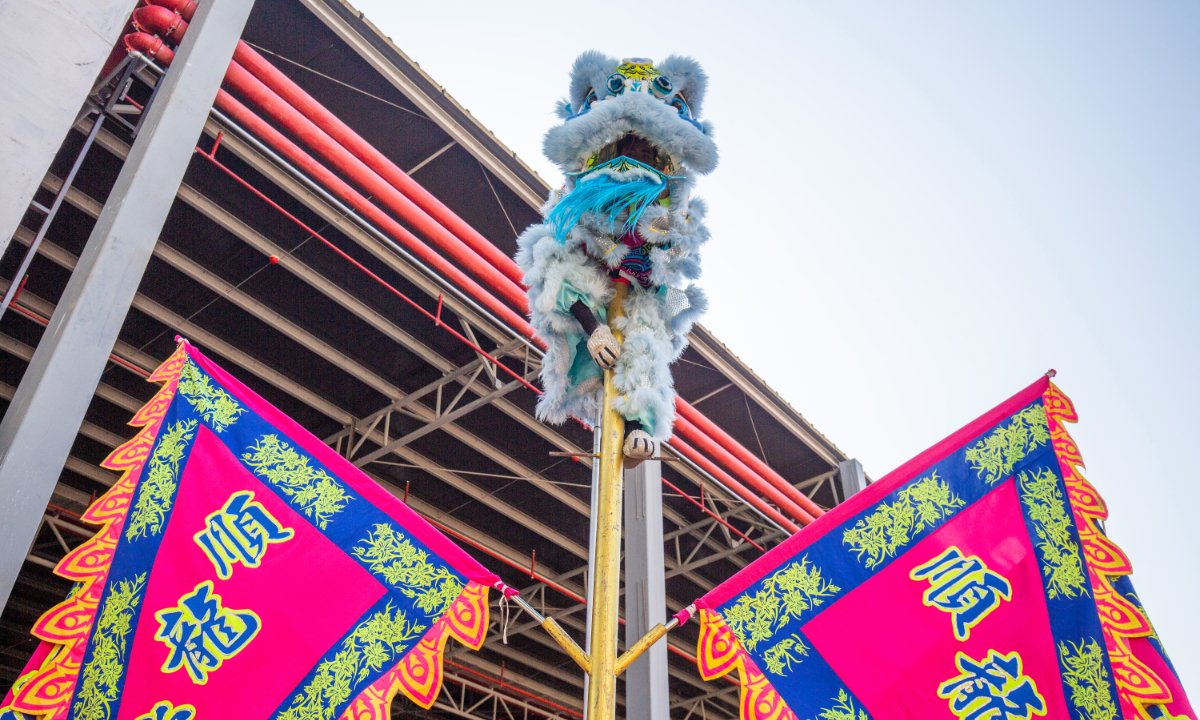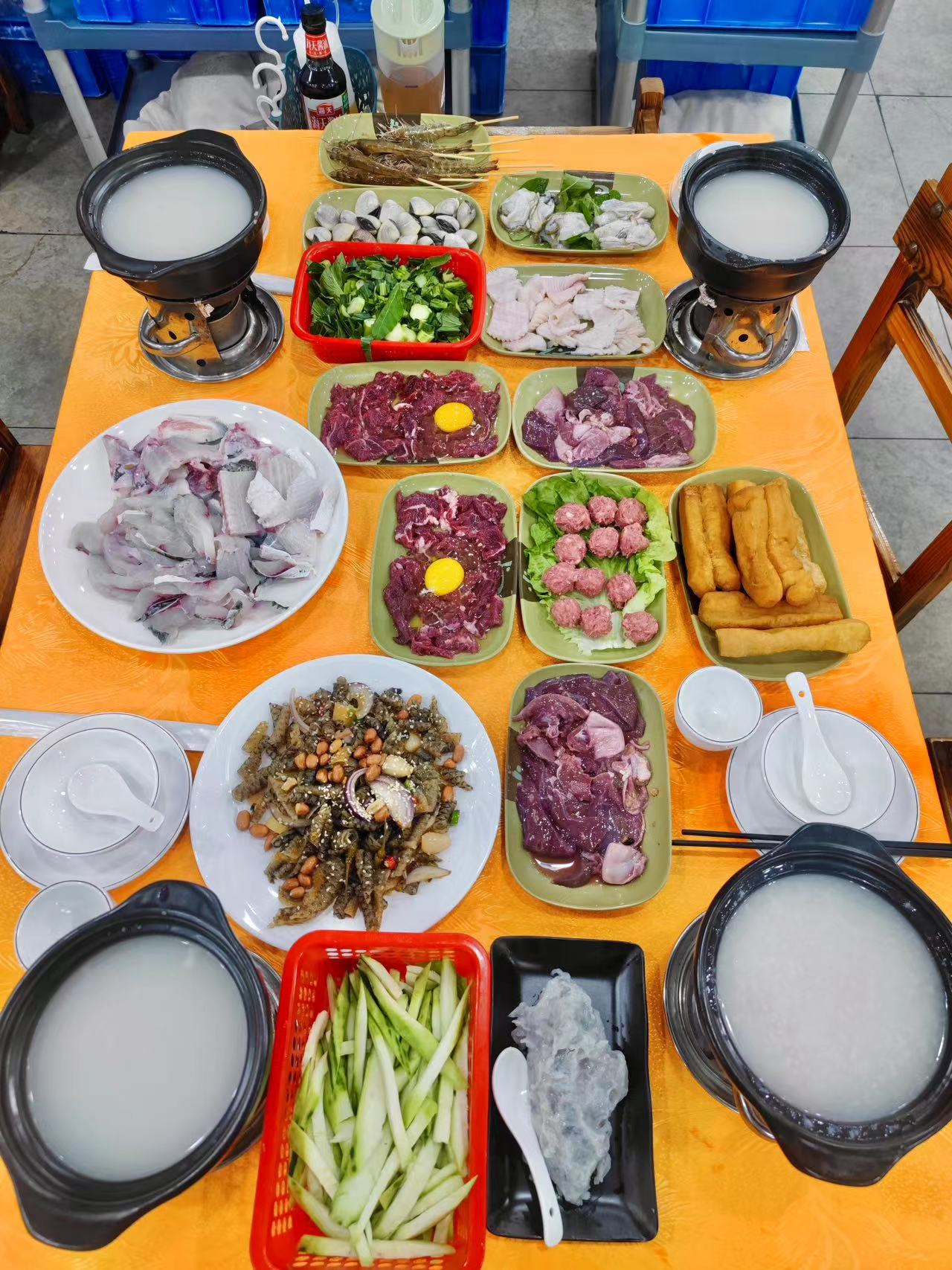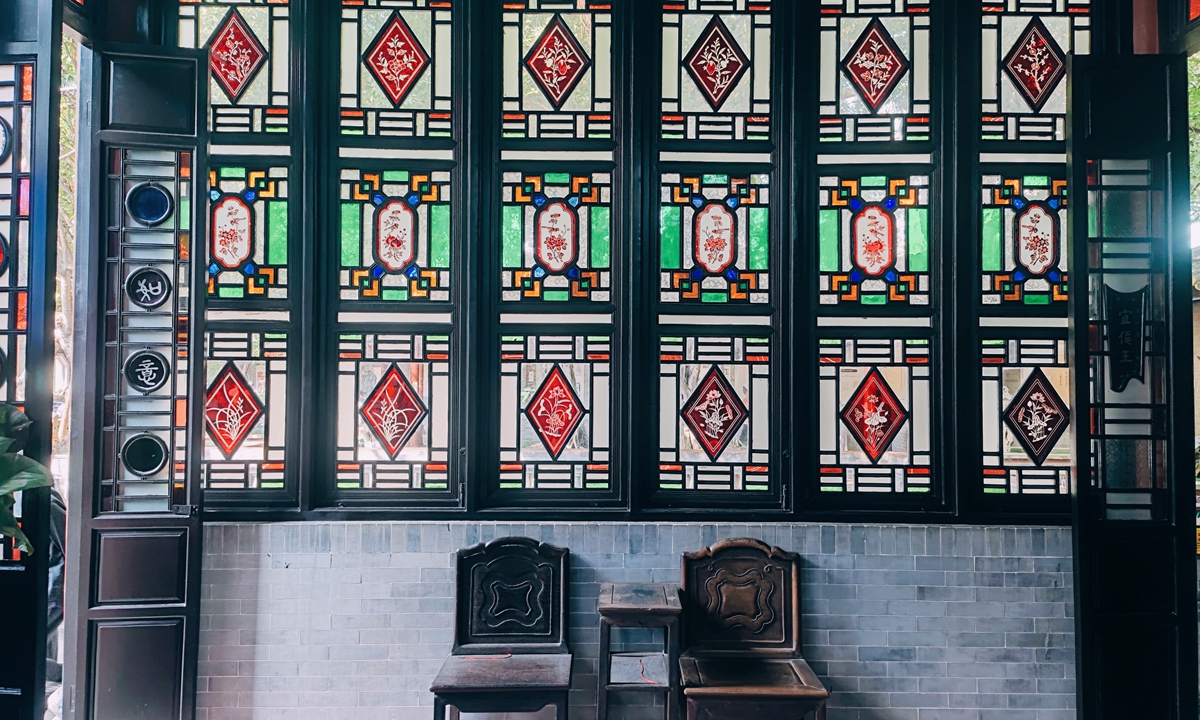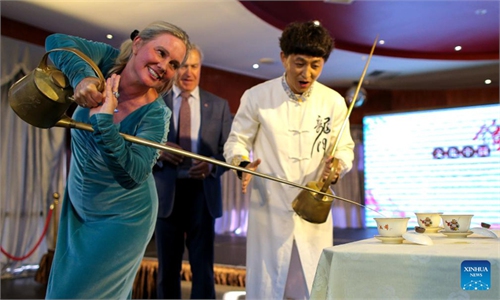ARTS / CULTURE & LEISURE
Greater Bay Area town renowned for gastronomy, kung fu, Cantonese heritage

Lion dance performances in Shunde, Foshan, South China's Guangdong Province Photo: VCG
After patiently waiting for an hour and a half, a group of tourists from Beijing were finally able to savor their servings of claypot rice, each featuring a tasty sauce and three toppings they had chosen earlier from an array of beef, pork, sausage, eel, grass carp and some ingredients rarely found in other parts of China.
It was New Year's Eve, and the group hurriedly finished their meal right in front of the open kitchen window before heading for the firework show.
During the three-day holidays, 788,000 tourists from across China and the world flocked to Shunde in Foshan, South China's Guangdong Province, marking a 50 percent increase from the previous year. Visitors were drawn to Shunde by the warm weather, mouth-watering local cuisine, snacks and the unique Cantonese culture of Lingnan, mostly the Cantonese speaking area.
'A bite of Shunde'
Shunde gained a positive reputation for its culinary excellence as early as the Qing Dynasty (1644-1911) with the saying "One should go to Guangzhou for good food, but to Shunde for a good chef." Guangzhou in the Qing Dynasty referred not to a city but a wider region which is today's Pearl River Delta.
The documentary A Bite of Shunde introduced this Guangdong town, a UNESCO named "City of World Cuisine," to nationwide and global audience.
The Pearl River Delta has long been an affluent area with convenient transportation. The Shunde cuisine is not only known for its exquisite ingredients - such as abalone, fish glue and the freshest seafood, but also for the meticulous cooking and presentation.
While high-end restaurants showcase Shunde's culinary prowess, street eateries and food carts conceal the real essence of the town's cuisine. Notable local specialties include claypot rice and congee hot pot - a pot of thin rice porridge as base for eaters to swish beef slices, pork guts, clams, shrimps, scallops.

The Shunde congee hot pot Photo: Zhang Han/GT
Savvy diners like Mengfan from Beijing, enjoy the rich diversity of protein and enhance their experience by adding seasonal vegetables along with celery cubes into the pot, and dipping the boiled beef into soy sauce and finishing the meal with the savory congee infused with the umami of all ingredients. "This is how life should be!" said Meng with satisfaction.
Shunde is also famous for its milk and dairy products. The extensive river network and limited farming lands prompted locals to raise and rent buffalos for a living for centuries. Buffalo milk has more fat and protein and is perfect to make desserts such as milk chips, fried milk rolls and milk puddings, which, made with buffalo milk and egg whites, became a signature dish of Shunde in 20th century when locals sold it to neighboring big port cities, namely Guangzhou and Hong Kong.
Cultural fusion
After enjoying a delightful meal and some snacks, tourists may want to exercise a little. But in Shunde and Foshan, exercise is more than just jogging and ball games as the area is home to many martial arts masters.
As the ancestral home of Bruce Lee Siu-long, Shunde has a museum to commemorate the Chinese-American martial artist and actor who first introduced martial arts to the world and changed Chinese people's international image.
Lee's master Ip Man, born in Foshan, played a vital role in inheriting and developing the Wing Chun martial art, and the Foshan Wing Chun was recognized as a national intangible cultural heritage in 2021.
The popularity of martial arts in Foshan can be seen in numbers - 600,000 out of the 9.55 million local residents are kung fu practitioners, with 297 officially registered kung fu gyms and over 200 unregistered ones. Foshan's martial arts legacy has spread globally, attracting learners and practitioners from 176 countries and regions.
Squares in Foshan differ significantly from those in other Chinese cities, which are often dominated by dancing groups: In Foshan martial arts practitioners are ubiquitous.
"Real masters could be hidden among those grandpas doing morning exercises," a taxi driver told the Global Times en route to Foshan's Ancestral Temple.
The Temple further connects the city with its martial arts heritage through lion dance performances executed during traditional festivals, such as the Spring Festival.
Incorporating kung fu elements, the Foshan branch of lion dance showcases the fusion of martial arts with cultural elements and the skills of advanced martial arts students, who are the only ones allowed to perform it.

Color glass window in Qinghui garden Photo: Zhang Han/GT
Another must-visit in Shunde is the Qinghui Garden, the residence of Long family. This artistically significant garden integrates elements of Chinese architecture, gardening, carvings, calligraphy, and limestone carving, presenting a compact layout and high architectural artistry...
The area also combines a balanced array of clear waters and green trees, walls and latticed windows, rockeries, small bridges, and winding corridors.
Regional integration
The delicious food and culinary heritage, the gardens and old buildings, and the relaxed lifestyle have made Shunde an ideal destination for short holidays. Thanks to regional transportation integration and development, the city is poised to become the "backyard" for the entire Guangdong-Hong Kong-Macao Greater Bay Area (the Greater Bay Area).
The Guangzhou-Foshan integration scheme has connected the subways of the two cities, allowing travel from Guangzhou South Station to Shunde's most vibrant area in 60 minutes. Additionally, one can also choose bullet trains to save time.
A new highway opening to traffic in 2024 is expected to shorten the driving time from Shunde to Shenzhen to 40 minutes, facilitating a two-city life.
Aaren Chan, a resident of China's Hong Kong Special Administrative Region, expressed great interest in Shunde. "Once the highway is open, I can spend weekends eating milk puddings and congee hot pot in Shunde. It would also be great to see the ancestral houses and museums of Chinese kung fu masters," he said excitedly.



